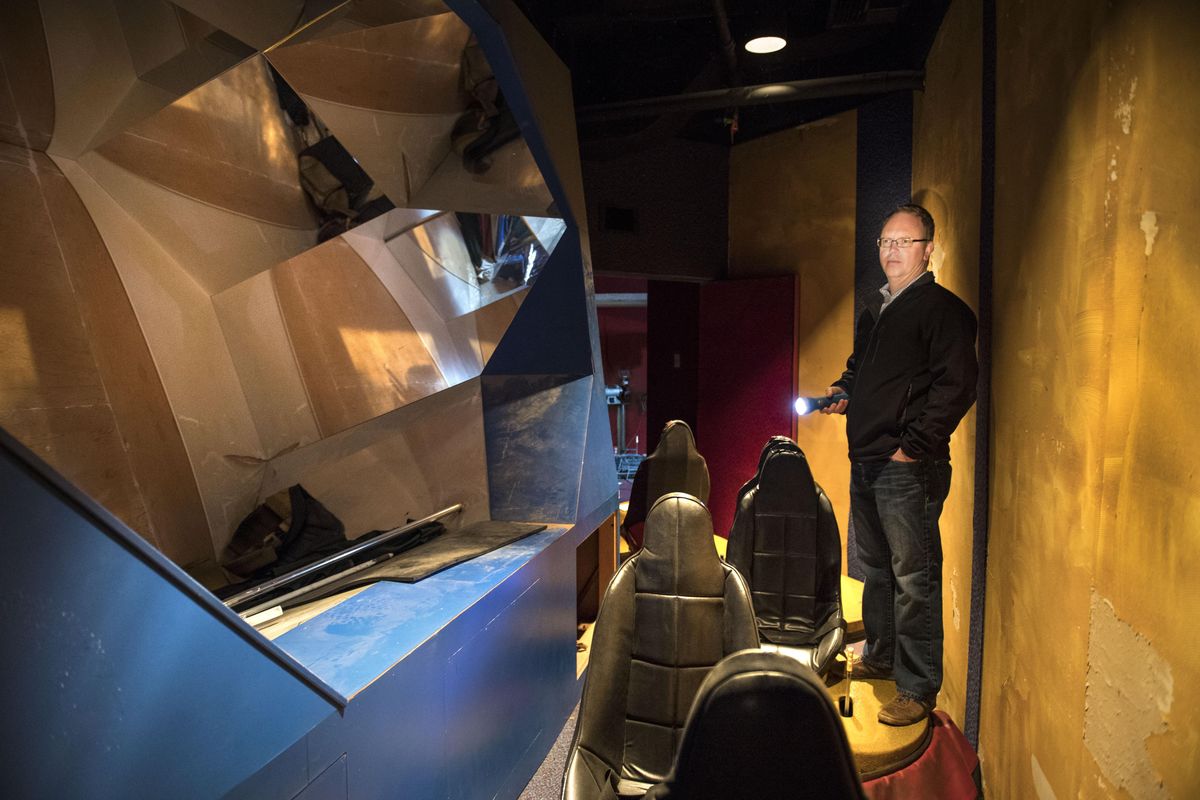Hidden in a busy part of Riverfront Park, remnants of a flop serve as cautionary tale for revitalization of U.S. Pavilion

Hidden in the center of Riverfront Park are the remains of a cautionary tale – one that should inform current efforts to revitalize the U.S. Pavilion.
Those not living in Spokane in the 1970s might not know that a “Disney quality” interactive exhibit called The Spokane Story opened in 1978. The exhibit was housed in the easternmost building of the structure that served as the U.S. Pavilion during Expo ’74.
It was meant to be the ultimate exhibit about Spokane, a tourist draw using the era’s most advanced technology to transport visitors back to elegant Browne’s Addition mansions, through the great Spokane fire of 1889 and down into the silver mines that funded the young city.
Riding on the success of Expo ’74, all stops were pulled and The Spokane Story opened as a 90-minute, computer-run multimedia exhibit in the summer of 1978.
It never took off.
And when it closed just a few years later, The Spokesman-Review called it “a real flooperoo financially.”
The shell of the exhibit is still there. Some set designs lean against the walls, an old map sits in a corner, a grimy rotating stage and filmless projectors huddle in permanent darkness on shelves in the closed-up building.
The last event held there was a haunted house some years ago. The power has largely been turned off to the building, which functions mostly as a storage space and shop for Riverfront Park maintenance staff.
On a recent flashlight-illuminated tour, Riverfront Park Director Jonathan Moog apologized for the fake blood splatters and hordes of plastic spiders the haunted house left behind.
“It really is fascinating how Spokane talked about itself,” said Moog, walking through the rooms that housed the exhibit. “It’s quite special but I’m not sure what we are going to do with it.”
In its heyday, The Spokane Story took visitors through 13 different sets, including a train ride with the landscape flying by outside, an elevator ride that made visitors feel like they traveled miles underground to a mine deep below and a visit to the bar of Dutch Jake, an early Spokane hotelier and businessman.
Actors played a variety of characters, including President Thomas Jefferson, who was shown sending Lewis and Clark out on their famous expedition.
Climate controlled and windowless, the exhibit pumped in pine-scented air and the sound of howling wind for a mountain pass scene.
“At least from a kid’s perspective it was very cool,” said Ted McGregor, who led the 23-member volunteer Riverfront Park Master Plan Advisory Committee and is now on the Spokane Park Board.
McGregor, publisher of the Inlander, said he was in middle school at the time The Spokane Story opened.
“We just went through it over and over again,” he said. “It really did connect people with Spokane history in a profound way.”
Yet it never drew enough people.
“That’s the problem with permanent exhibits: once you’ve been through it once, do you have to go again? No, you don’t,” McGregor said. “I was probably just a little odd that I went through it so many times.”
After The Spokane Story closed, most of the exhibit material was sold to the highest bidder, and the doors were permanently closed to a painful and expensive chapter of Riverfront Park’s history.
The U.S. Pavilion and the surrounding area is undergoing a $22 million reconstruction and update as part of the Riverfront Park renovation plan, and it has yet to be decided what will happen to many of the buildings below the Pavilion.
McGregor said he hopes people can appreciate the struggle park officials have had when trying to figure out what to do with the Pavilion.
The Riverfront Park Master Plan proposes more events in the restored park.
“Unlike permanent exhibits, events are always different and they give you different reasons to go to the park,” McGregor said, adding that The Spokane Story serves as quite the cautionary tale.
He hopes the renovated Riverfront Park will do better job at telling visitors about Spokane’s history.
“The current Riverfront Park doesn’t do a great job of that,” McGregor said.